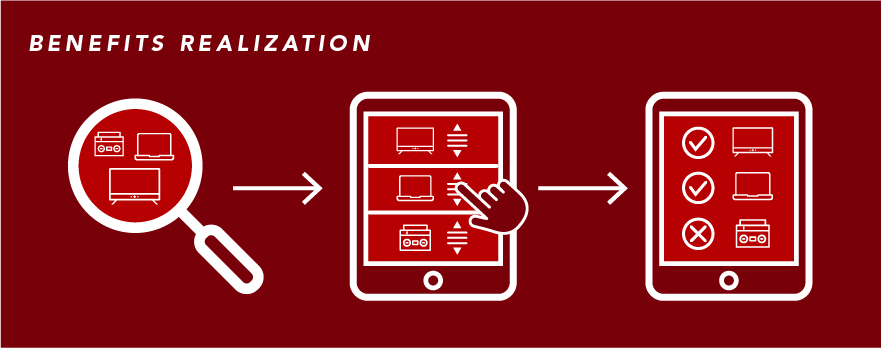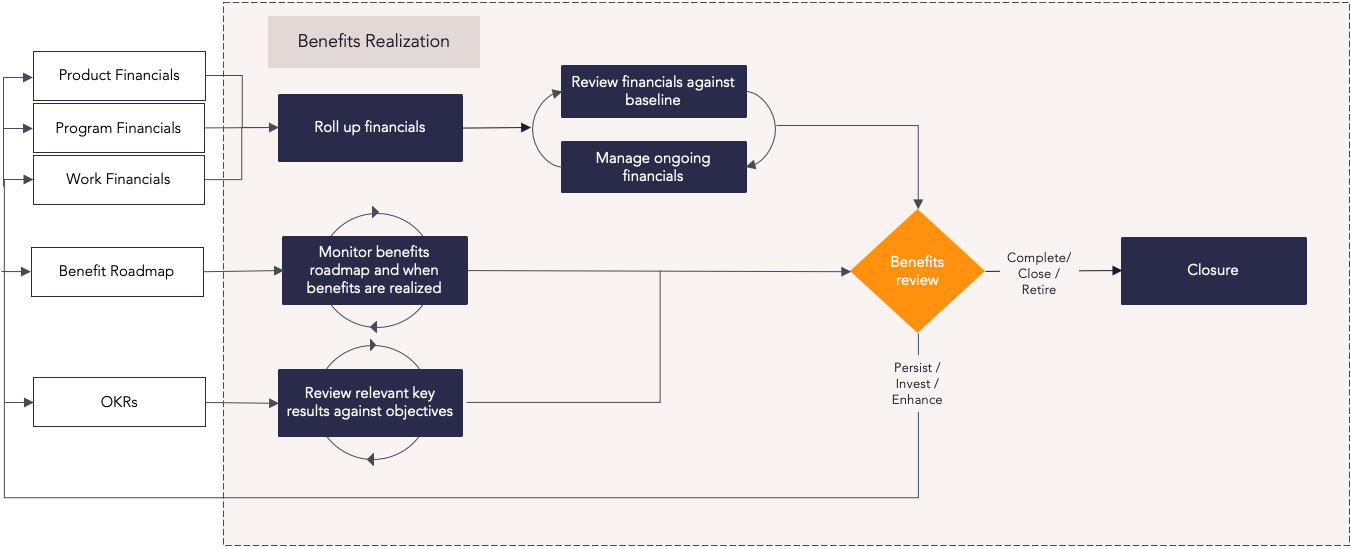Benefits Realization Process Steps
Benefits Realization
The Benefits Realization capability allows organizations to assess their progress towards the outcomes and benefits defined within their strategy and planning phases. Each capability within the Planview Capability Framework has a distinct set of features and functionality, business processes, best practices, and analytics and reports that deliver value to customers in the form of specific business outcomes.
Definition and Business Value
Definition
Allows organizations to assess their progress towards the outcomes and benefits defined within their strategy and planning phases. It enables organizations to measure the value products, initiatives, and investments (such as programs, projects, and epics) deliver to the enterprise based on the defined strategic plans, objectives, financials, and roadmaps.
Business Value
We can realize objectives by measuring the performance of key results against targets.
Business Value
We can utilize key performance indicators on investments to measure progress against the approved business case.
Business Value
We can monitor and manage revenue and benefits performance and realize value by comparing actual and forecast against the plans of programs and products to ensure investments are meeting objectives and maximizing performance.
Best Practices
Assign a benefits owner
Assign someone who will be accountable for realizing benefits once benefits projections have been evaluated. This role includes creating the business case and further refining projected benefits, collecting and reevaluating data at key project gates, and then reporting how benefits perform against the baseline.
State the benefits clearly
State clearly in your business case what the expected benefits are, how they will be measured, and a timeframe for their realization. This will gain buy-in from key stakeholders and make reevaluation and reporting easier during execution and delivery, especially for intangible benefits like customer satisfaction and brand awareness.
Rank your benefits
Create a ranking order for your expected benefits. Having a ranking order determines which benefits you will track in the greatest depth and which metrics will most contribute to the overall health of your benefits realization.
Measure around the milestones
Determine a cadence for measuring and reporting benefits to track progress and detect potential issues. Since benefits can begin realization once projects , programs, or products are delivered, using the expected delivery dates of key projects can provide a baseline schedule.
Commit to delivery
Effectively communicate the final goals and benefits to your teams to ensure they commit to achieving the benefits. Understanding and committing to the benefits will aid in alignment between teams and managing unexpected changes.
Conduct a debrief
Hold a benefit debrief through surveys, in-person meetings, or a combination of both. Review the organization’s performance and evaluate how to implement new knowledge. These discussions should examine questions such as whether benefits projections were optimistic or pessimistic, if projections were accurate, if execution was mindful of the benefits, and more.
Processes and Reports

The benefits realization capability allows organizations to realize the value of their products, initiatives, and investments. This is monitored by tracking key results against outcomes, and reviewing financial plans that track benefits, revenue, and costs.
Related Capabilities
Product Funding
Create financial targets for products and track variances over time.
Read moreProgram Management
Monitor program roadmap realization by tracking program status and health.
Read moreWork Management
Develop a work plan, manage project delivery, and report on project status and health.
Read moreObjectives and Key Results
Define, align around, execute, and measure progress toward organizational goals.
Read more
Supported Solutions


